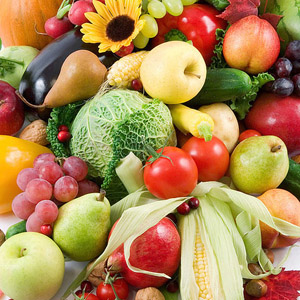The chemical formula of carbohydrate is and carbohydrate is classified as sacharides, oligosaccharides and polysaccharides according to the degree of polymerization. Saccharides include monosaccharides, i.e. glucose, fructose and galactose, and disaccharides, i.e. sucrose, lactose and maltose, and oligosaccharides include maltooligosaccharide and oligosaccharide including non-glucose monosaccharides, respectively. Polysaccharides include starch, i.e. amylose and amylopectin and non-starch polysaccharides, i.e. cellulose, hemicellulose and pectin, respectively. Most of dietary fiber from diet is indigestible non-starch polysaccharides.
Carbohydrates have 4 kcal/g energy and alcohol have 7 kcal/g energy, respectively. Carbohydrates digested and absorbed in the small intestine is processed in the liver and supplied as glucose for brain, nervous tissue, renal tubules, testis and skeletal muscle with lack of oxygen.
The Dietary Reference Intakes for Japanese 2010 edition had set 50-70 % energy as target amount of estimated energy requirement in adult and child and 50-65 % energy as target amount in 2015 edition, respectively. Both of them have not set in infant, pregnant and lactation.
| Gender | Male | Female |
|---|---|---|
| Age | Target amount (median) | Target amount (median) |
| 0-5 M | ||
| 6-11 M | ||
| 1-2 | 50-65 (57.5) | 50-65 (57.5) |
| 3-5 | 50-65 (57.5) | 50-65 (57.5) |
| 6-7 | 50-65 (57.5) | 50-65 (57.5) |
| 8-9 | 50-65 (57.5) | 50-65 (57.5) |
| 10-11 | 50-65 (57.5) | 50-65 (57.5) |
| 12-14 | 50-65 (57.5) | 50-65 (57.5) |
| 15-17 | 50-65 (57.5) | 50-65 (57.5) |
| 18-29 | 50-65 (57.5) | 50-65 (57.5) |
| 30-49 | 50-65 (57.5) | 50-65 (57.5) |
| 50-69 | 50-65 (57.5) | 50-65 (57.5) |
| 70- | 50-65 (57.5) | 50-65 (57.5) |
| Pregnant | ||
| Lactation |
| Gender | Male | Female |
|---|---|---|
| Age | Target amount (range) | Target amount (range) |
| 0-5 M | ||
| 6-11 M | ||
| 1-2 | 50 ≤ < 70 | 50 ≤ < 70 |
| 3-5 | 50 ≤ < 70 | 50 ≤ < 70 |
| 6-7 | 50 ≤ < 70 | 50 ≤ < 70 |
| 8-9 | 50 ≤ < 70 | 50 ≤ < 70 |
| 10-11 | 50 ≤ < 70 | 50 ≤ < 70 |
| 12-14 | 50 ≤ < 70 | 50 ≤ < 70 |
| 15-17 | 50 ≤ < 70 | 50 ≤ < 70 |
| 18-29 | 50 ≤ < 70 | 50 ≤ < 70 |
| 30-49 | 50 ≤ < 70 | 50 ≤ < 70 |
| 50-69 | 50 ≤ < 70 | 50 ≤ < 70 |
| 70- | 50 ≤ < 70 | 50 ≤ < 70 |
| Pregnant | ||
| Lactation |
References:
The Dietary Reference Intakes for Japanese (2015 edition) Carbohydrate (pdf)
The Dietary Reference Intakes for Japanese (2010 edition) Carbohydrate (pdf)

